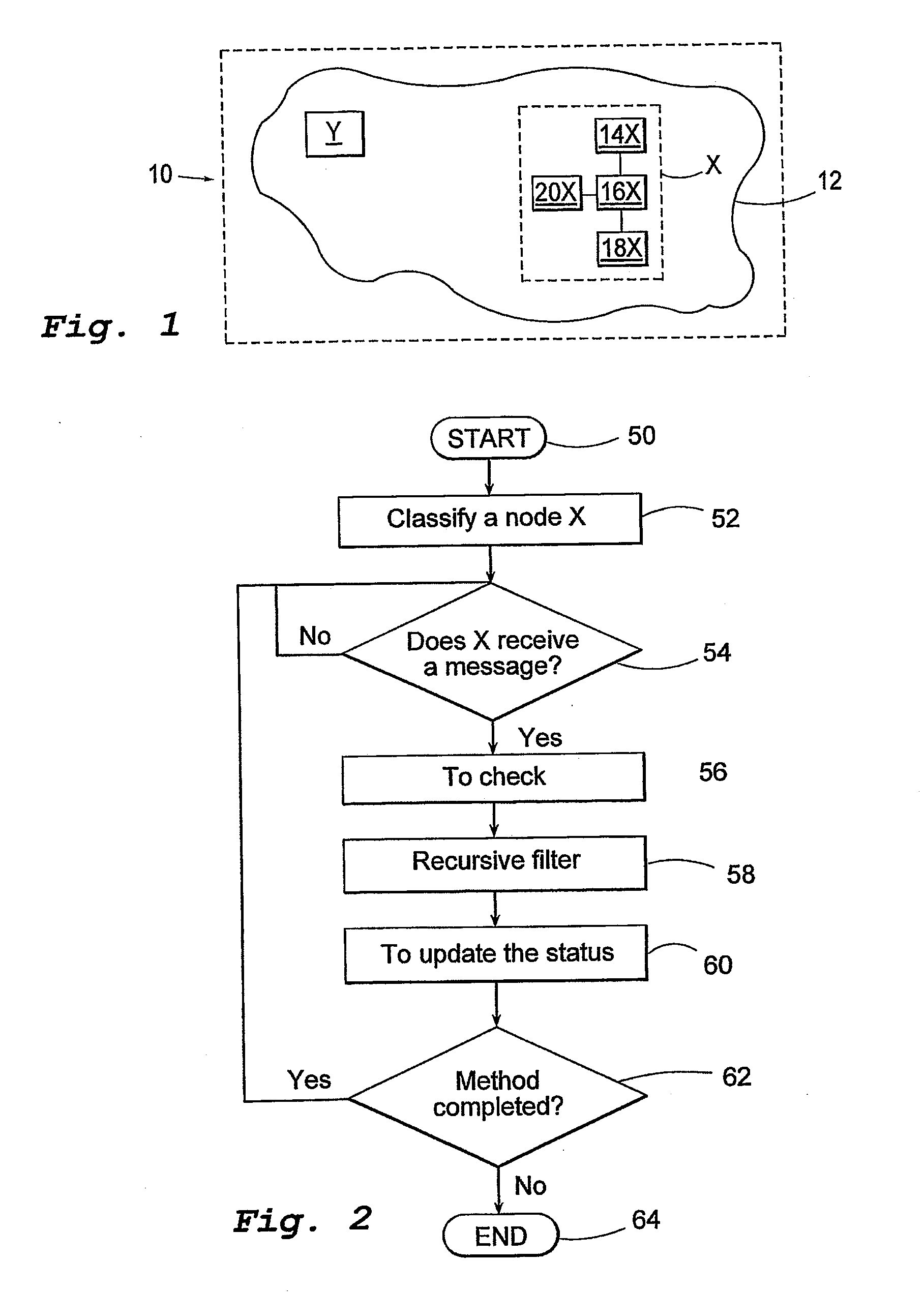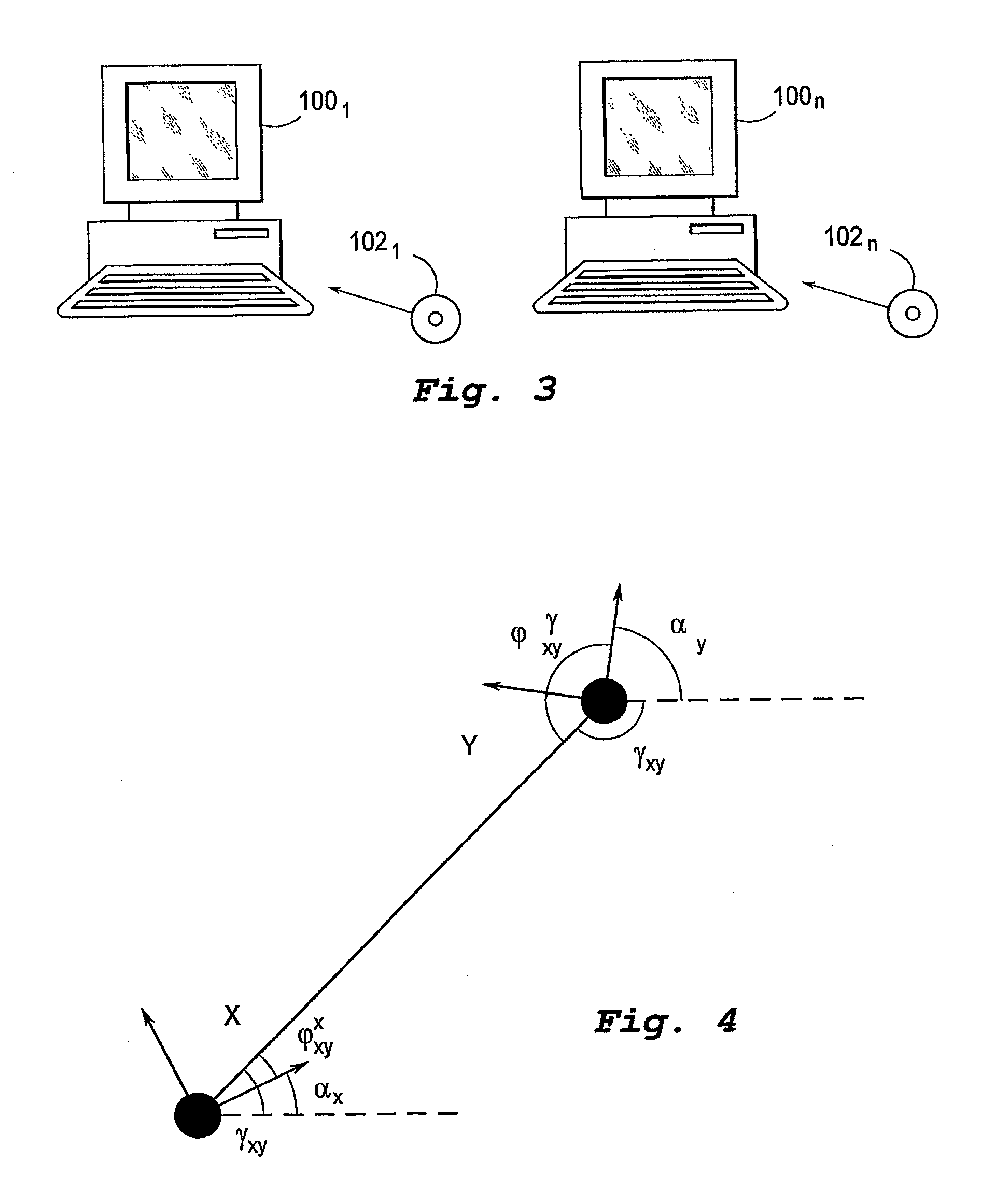Method for localization of nodes by using partial order of the nodes
a node and partial order technology, applied in the field of wireless network localization of nodes, can solve the problem that errors cannot be re-circulated and amplify
- Summary
- Abstract
- Description
- Claims
- Application Information
AI Technical Summary
Benefits of technology
Problems solved by technology
Method used
Image
Examples
Embodiment Construction
[0046]In FIG. 1 there is disclosed a block diagram of a system 10 operable to localize, i.e. find positions and orientations of nodes X, . . . , Y communicating in a wireless network 12. For the sake of simplicity there is only disclosed two nodes X, Y in FIG. 1, wherein only the node X is disclosed completely. The node X comprises a partial ordering means 14X operable to initially classify its node X as an anchor node A if a measure of uncertainty of the state estimate, such as a state estimate error covariance norm, is below a first threshold value, or else classify its node as a non-anchor node, giving rise to a partial order of the nodes X, Y. The node X also comprises a control means 16X connected to the partial ordering means 14X, and a recursive filter means 18X also connected to the control means 16X. Also disclosed in FIG. 1 is a memory means 20X connected to the control means 16X. Every time a node X receives a message from another node Y, the control means 16X is operable...
PUM
 Login to View More
Login to View More Abstract
Description
Claims
Application Information
 Login to View More
Login to View More - R&D
- Intellectual Property
- Life Sciences
- Materials
- Tech Scout
- Unparalleled Data Quality
- Higher Quality Content
- 60% Fewer Hallucinations
Browse by: Latest US Patents, China's latest patents, Technical Efficacy Thesaurus, Application Domain, Technology Topic, Popular Technical Reports.
© 2025 PatSnap. All rights reserved.Legal|Privacy policy|Modern Slavery Act Transparency Statement|Sitemap|About US| Contact US: help@patsnap.com



